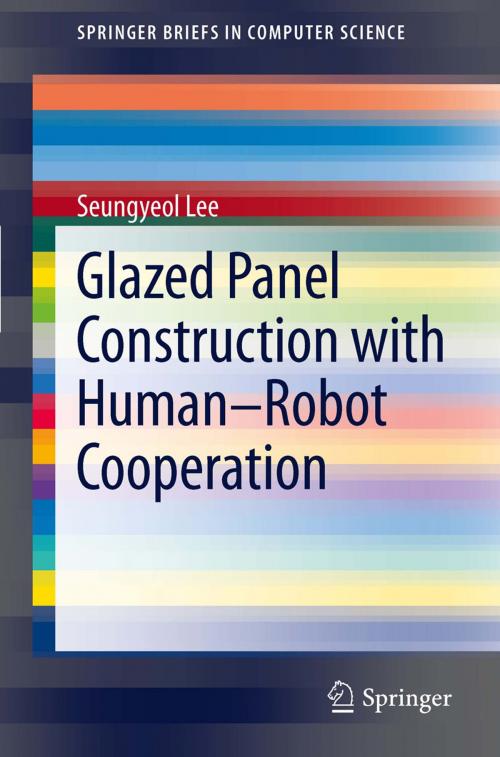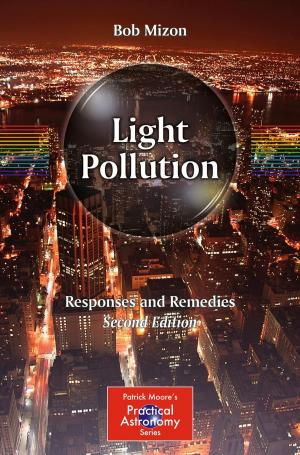Glazed Panel Construction with Human-Robot Cooperation
Nonfiction, Science & Nature, Technology, Engineering, Mechanical, Computers, Advanced Computing, Artificial Intelligence, General Computing| Author: | Seungyeol Lee | ISBN: | 9781461414186 |
| Publisher: | Springer New York | Publication: | September 21, 2011 |
| Imprint: | Springer | Language: | English |
| Author: | Seungyeol Lee |
| ISBN: | 9781461414186 |
| Publisher: | Springer New York |
| Publication: | September 21, 2011 |
| Imprint: | Springer |
| Language: | English |
These days, construction companies are beginning to be concerned about a potential labor shortage by demographic changes and an aging construction work force. Also, an improvement in construction safety could not only reduce accidents but also decrease the cost of the construction, and is therefore one of the imperative goals of the construction industry. These challenges correspond to the potential for Automation and Robotics in Construction as one of solutions. Almost half of construction work is said to be material handling and materials used for construction are heavy and bulky for humans. To date, various types of robots have been developed for glazed panel construction. Through the case studies on construction, to which the robots were applied, however, we identified difficulties to be overcome. In this study, a human-robot cooperative system is deduced as one approach to surmount these difficulties; then, considerations on interactions among the operator, robot and environment are applied to design of the system controller. The human-robot cooperative system can cope with various and construction environments through real-time interaction with a human, robot and construction environment simultaneously. The physical power of a robot system helps a human to handle heavy construction materials with a relatively scaled-down load. Also, a human can feel and respond to the force reflected from robot end effecter acting with working environment. Through the experiments and mock-up tests with a prototype robot, we observe the characteristics of the power assist and the force reflection, the merits of the human-robot cooperation system. To apply human-robot cooperative system at real construction sites, Glazed Ceiling Panel Construction Robot is developed for the first time. This robot is distinguished from other glazed panel construction robots because of the methods of lifting the panel to high installation positions and installing the fragile and bulk panel with robot force control. After applying to real construction sites, evaluation on the productivity of the developed robot was done by comparing and analyzing with the existing installation methods.
These days, construction companies are beginning to be concerned about a potential labor shortage by demographic changes and an aging construction work force. Also, an improvement in construction safety could not only reduce accidents but also decrease the cost of the construction, and is therefore one of the imperative goals of the construction industry. These challenges correspond to the potential for Automation and Robotics in Construction as one of solutions. Almost half of construction work is said to be material handling and materials used for construction are heavy and bulky for humans. To date, various types of robots have been developed for glazed panel construction. Through the case studies on construction, to which the robots were applied, however, we identified difficulties to be overcome. In this study, a human-robot cooperative system is deduced as one approach to surmount these difficulties; then, considerations on interactions among the operator, robot and environment are applied to design of the system controller. The human-robot cooperative system can cope with various and construction environments through real-time interaction with a human, robot and construction environment simultaneously. The physical power of a robot system helps a human to handle heavy construction materials with a relatively scaled-down load. Also, a human can feel and respond to the force reflected from robot end effecter acting with working environment. Through the experiments and mock-up tests with a prototype robot, we observe the characteristics of the power assist and the force reflection, the merits of the human-robot cooperation system. To apply human-robot cooperative system at real construction sites, Glazed Ceiling Panel Construction Robot is developed for the first time. This robot is distinguished from other glazed panel construction robots because of the methods of lifting the panel to high installation positions and installing the fragile and bulk panel with robot force control. After applying to real construction sites, evaluation on the productivity of the developed robot was done by comparing and analyzing with the existing installation methods.















